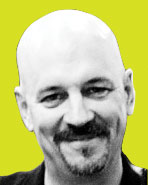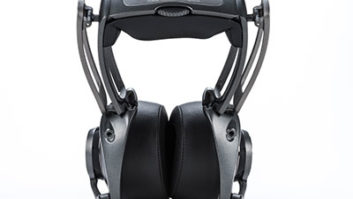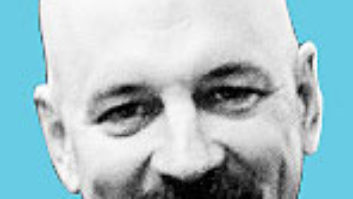
As I was learning the craft of engineering, I was fortunate enough to assist some of the best ears in the business, which gave me a rare opportunity to see and hear what they trusted. They all trusted their ears. That comes from working with great gear and putting in your 10,000 hours. (Google “Malcolm Gladwell’s Outliers.”) Their gear choices and techniques intrigued me, providing me with something I could quantify and immediately put into my own bag of tricks.
For instance, Mick Guzauski trusted Eventide’s SP2016 reverb as his main go-to box for room ambience and longer ’verbs for drums and vocals. He had two and used them on every mix. Engineer Terry Christian relied on Shure SM81s in a spaced pair over a drum kit and also used a Neumann U47 FET on kick drum (both pads in). Terry always got great drum tracks no matter who was playing. Erik Zobler had an outboard SSL bus compressor that he used on every mix. I remember we once A/B’d a Neve 33609 with the SSL unit, and after some tweaking Erik had it sounding so close to the SSL it was a draw (great ears). Humberto Gatica believed in a “golden” chain of outboard gear for lead vocals, including a GML 8200 EQ. He also preferred automating mutes rather than using gates for cleaning up unwanted audio between kick and snare hits, always making for challenging (and chop-building) moments for the assistant, as he usually trusted that to the “second.”
With trust in mind, my design for this new column is to inform you about new technologies and techniques, interesting and provocative viewpoints, and industry trends. What’s been rocking my world recently is a powerful and portable laptop mixing rig I’ve been putting together. I’ve been working at this for more than two years now, a lifetime in the computer world, but only in the past eight months have all the pieces fallen into place. Last year, Apple released new MacBook laptops that offered FireWire 800 across the line, even on the 13-inch models. I bought one with 2.26GHz Intel Core 2 Duo processors and upped the RAM to 4 gigs.
At AES last November, Avid released Pro Tools 9 with its near-TDM feature set; that brought the DAW into place. The ability to operate Pro Tools natively with delay compensation was key to my setup. I added the Complete Production Toolkit 2, which brings surround mixing to Pro Tools, adding 192 voices at 44.1, 96 voices at 96 kHz and 48 voices at 192 kHz. Avid also bought Euphonix last year and eventually made Pro Tools 9 a EuCon-compatible DAW. So for control I’m using the Euphonix MC Control, which works at potential 12-bit resolution. This is a major experiential and workflow shift from MIDI resolution and HUI-based surfaces. Mouse mixing sucks!
Then at Winter NAMM in Anaheim this year, Universal Audio unveiled the UAD-2 Satellite Quad FireWire DSP Accelerator. Apart from some UA originals, the plug-ins are modeled on coveted processors like the Fairchild 670 compressor, dbx 160 compressor, Manley Massive Passive EQ, Fatso Jr. compressor/tape simulator, Trident A-Range EQ, EMT 250 reverb and many more. Opening the list of plug-ins on an insert is like a trip down memory lane. And they sound great.
The weak link out of the computer is the audio output, which is fine for casual listening but not up to pro audio(phile) standards. After some research, I opted for the Benchmark DAC-1 USB. It’s the latest version of the company’s D/A converter and offers AES/S/PDIF, optical and USB inputs, along with balanced line outs and its high-current HPA2 headphone amp. The clock is phenomenal, and the difference it brought to the output is huge. The stereo image is tangibly wider, the bottom end is bigger and it unveils incredible detail in reverb tails and other low-volume mix elements.
For playback, I have Focal CMS40 monitors. I don’t have a large space and didn’t want to overpower the room and amplify all the acoustical ugliness. The CMS40s sound great at low volume, and if I need to crank them, they’ll get plenty loud. My final “gut-check” monitoring source is a pair of Sennheiser HD800 headphones, which are the best I’ve heard. They are brutally honest, and I’d bet a paycheck that they’re telling me the truth. I’m also lucky to have some great rooms near my office that I can reference along the way.
Although this rig does have occasional hiccups when the accelerator hits the floor, it’s a start. (Come on Thunderbolt!) The rig sounds fantastic and has built a lot of confidence in my workflow and increased my ability to work in different environments. These are the kinds of things I trust.





